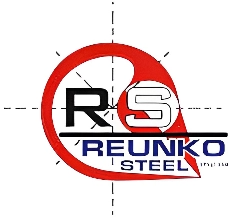In the high-stakes world of mining, safety and structural integrity are paramount. The humble steel roof bolt is a crucial component that ensures the stability and safety of underground environments. These unassuming yet robust fasteners are vital in securing roof strata, preventing collapses, and safeguarding miners’ lives. But just how strong are steel roof bolts, and what factors contribute to their reliability and effectiveness? This guide delves into the world of steel roof bolts in mining applications, exploring their strength, design considerations, installation methods, and their critical role in ensuring the safety and efficiency of mining operations.
Understanding the Strength of Steel Roof Bolts
Steel roof bolts are engineered to withstand immense pressure and tension, making them a critical component in supporting the roof strata in underground mining environments. Their strength and reliability are determined by several factors, including:
- Material Composition: Steel roof bolts are typically manufactured from high-strength steel alloys, such as Grade 8.8 or Grade 10.9, which exhibit excellent tensile strength and resistance to deformation. These materials are chosen for their durability and ability to withstand the extreme conditions encountered in mining operations, including high-stress levels, corrosion, and abrasive materials.
- Thread Design: The threading of roof bolts is carefully engineered to maximise grip and load-bearing capacity. For example, Acme threads provide a larger contact area and greater resistance to shearing forces, while square or trapezoidal threads offer enhanced stability and torque resistance. The choice of thread design depends on the specific requirements of the mining application and the desired level of strength and security.
- Coatings and Treatments: Steel roof bolts are often coated or treated with protective finishes to further enhance their durability and resistance to corrosion. Common coatings include galvanisation, epoxy coatings, or zinc plating, which create a barrier against moisture, chemicals, and environmental contaminants. These coatings extend the bolts’ lifespan and ensure consistent performance in harsh mining conditions.
Installation and Maintenance Considerations
Their design and material composition do not solely determine the strength of roof bolts; proper installation and maintenance are equally crucial factors. Key considerations include:
- Installation Techniques: Steel roof bolts must be installed correctly to achieve their maximum load-bearing capacity and ensure the structural integrity of the roof strata. This typically involves drilling pilot holes into the roof, inserting the bolts, and applying tension to secure them in place. Advanced installation techniques, such as resin anchoring or mechanical expansion, may be used to further reinforce the bond between the bolt and surrounding rock strata.
- Regular Inspections: Regular inspections are essential to identify signs of wear, damage, or deterioration in roof bolts. Visual inspections, torque testing, and ultrasound monitoring are commonly used to assess the bolts’ condition and detect potential issues before they compromise safety. Damaged or corroded bolts should be promptly replaced to prevent structural failures and ensure the continued safety of mining personnel.
Contact Reunko Steel For Details
Contact one of our representatives today to learn more about our steel roof bolts.
